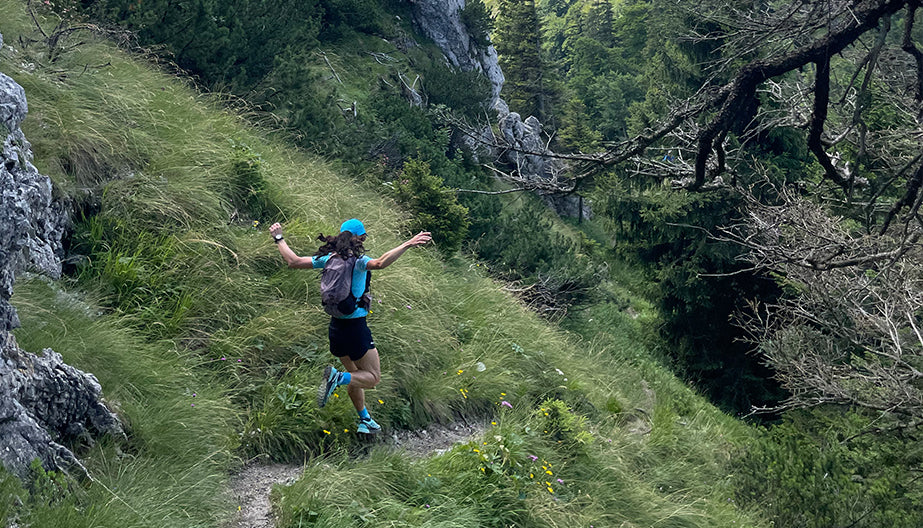Find out how to run most efficiently and safely off-road. No trail running champion fell out of blue, you can become one too by following these technical tips prepared by professional trail runner Natalia TrailFex®.

Body position
Keep your core stable and avoid cramps
A tense body increases the risk of a misstep, play with the terrain and navigate rough and smooth surfaces with small, quick steps.
Don’t look at your feet
Always look a few metres ahead and scan the ground. Look for a line you want to run in and follow it.
How to run uphill
Shorter strides and greater cadence.
Run on the forefoot and use your arms consciously and in synchrony with your legs.
Walking is recommended, it is more efficient on steep climbs.
Switch to speed hiking mode. Either use your poles as an extra push or simply keep your hands just above your knee but not on your thigh. This saves your energy. The aim is to help the body and muscles become used to the exercise, this will safeguard your body.

Keep a steady pace
It doesn’t matter if you run or walk uphill. Every change of pace costs your body a lot of energy, to the detriment of your endurance. Keep your perception of effort under control, never overdo it.
Features of a good trail running shoe for running uphill
Choose a shoe with the right grip for the terrain you are running on. In order not to lose grip on rock, for example, you need a sole with a lugged outsole.
How to run downhill
Short, fast strides
This ensures quick reactions on the ground.
Land on the forefoot
This allows you to set your stride more precisely and avoid twisting your ankle.
Keep your knees soft
Or walk with your knees slightly bent. Keep your ground contact time as short as possible, as if you were walking on hot coals.
Bring your centre of gravity slightly forward and keep it low
The challenge here is to resist the natural instinct and fear of leaning back and landing on your heels during the descent. This would slow you down and you would also risk cramps.

Swing your arms away from your torso
Let your arms swing lower than during a road running. Keeping them open away from the torso will provide you the balance, stability and momentum you need.
Never brake jerkily
Reduce your speed when it gets steep and run calmly in serpentines.
Features of a good trail running shoe for running downhill
Do not underestimate the slipperiness of muddy, soft or uneven ground. A good trail running shoe must have specially designed, structured lugs to increase braking capacity.



